If you live in the southeastern United States, then you may have seen a hognose snake or even a cottonmouth. Here, we’ll learn about the exact differences between the cottonmouth and the hognose snake. We’ll start by taking a look at each snake’s size and appearance, then move on to their location and habitat. Then, we’ll learn about each species’ behavior and lifespan, and learn a little more about their reproduction too.
Read on to learn more about the cottonmouth vs hognose snake!
Comparing Cottonmouth vs Hognose Snake
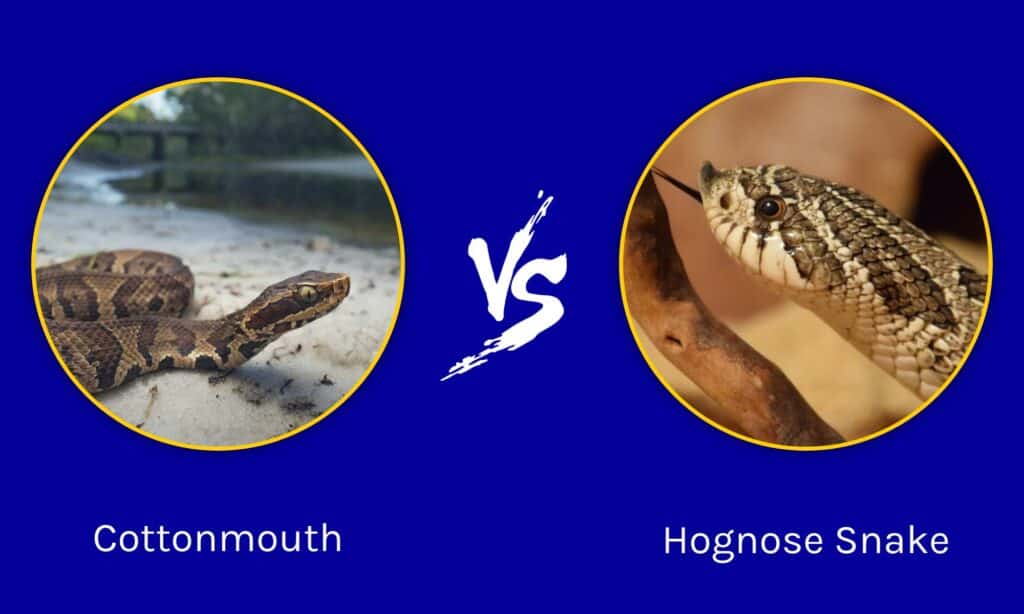
| Cottonmouth | Hognose Snake | |
|---|---|---|
| Size | 24-72 inches | 28-46 inches |
| Appearance | Triangular heads with heat pits and venom glands; brown, yellow, or black bodies with darker stripes | Piglike snout with a heavy body; shades of brown, black, yellow, or gray with irregular splotches |
| Location and Habitat | Southeastern United States; swamps, floodplains, wetlands | Eastern United States; fields, agricultural land, woodlands |
| Behavior | Will open mouth and stand its ground when threatened | Diurnal, eats mostly toads |
| Lifespan | 15-20 years | 9-19 years |
Key Differences Between Cottonmouth vs Hognose Snake
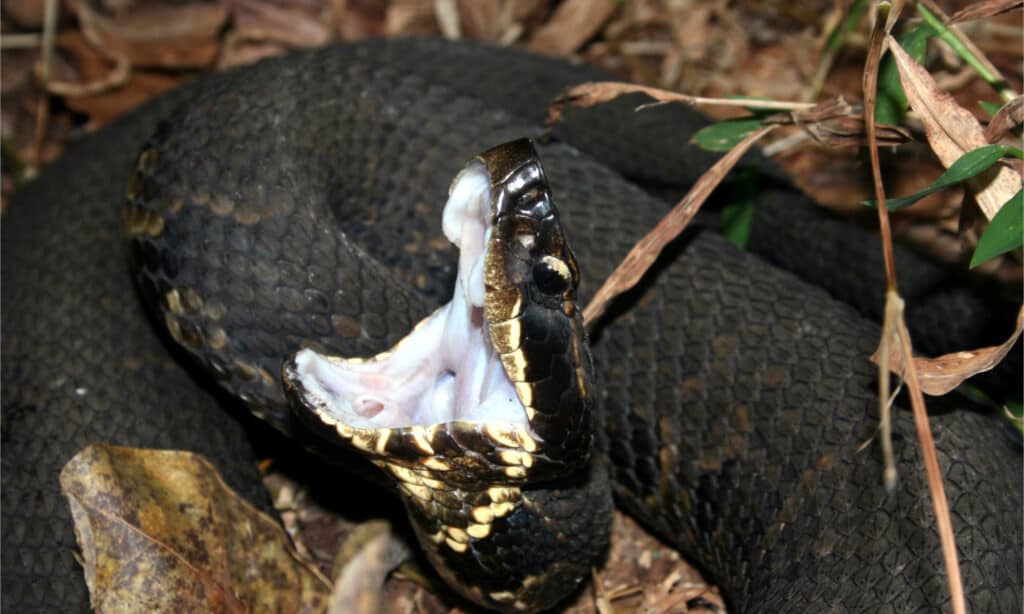
Both the cottonmouth and the hognose snake inhabit the southeastern United States, though the hognose snake has a wider distribution.
©Psychotic Nature/Shutterstock.com
The key difference between the cottonmouth and hognose snake is that the cottonmouth is highly venomous, whereas the hognose snake is only dangerous to toads. Further differences include the cottonmouth snake’s behavior, which is significantly more aggressive when it comes to self-defense than the hognose snake’s behavior. While cottonmouths always live near freshwater, the hognose snake prefers dry areas. Also, cottonmouths give birth to live young, while hognose snakes lay eggs.
Let’s take a closer look at the exact differences between cottonmouths and hognose snakes.
Cottonmouth vs Hognose Snake: Size
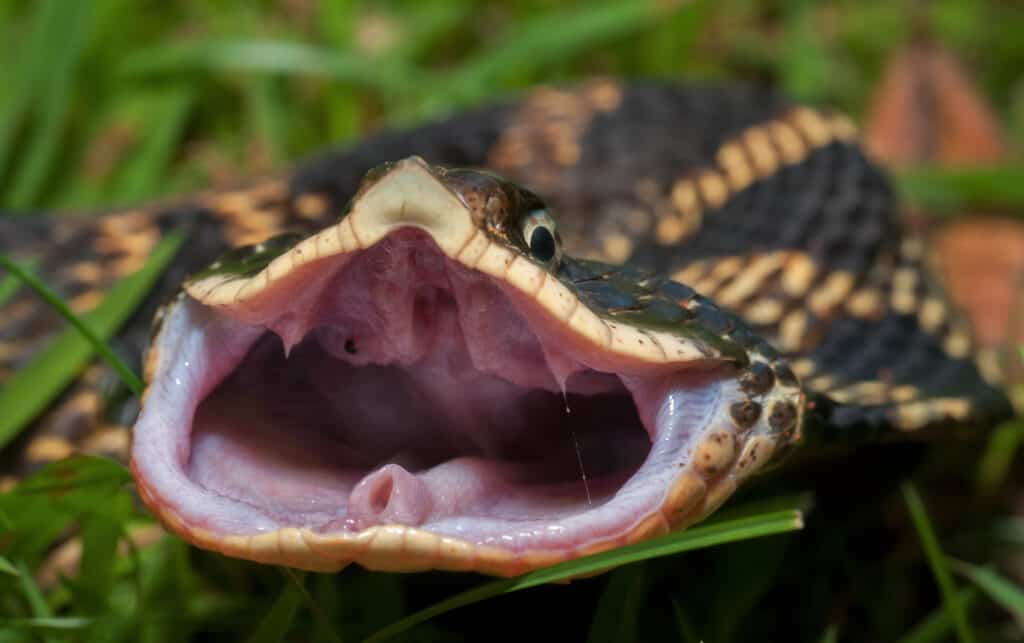
Hognose snakes are generally the same size as cottonmouths.
©Mike Wilhelm/Shutterstock.com
Cottonmouth and hognose snakes are generally the same size. Adults average around three feet long but may grow up to four feet long. Both snakes have heavy bodies. At birth, cottonmouth snakelings are between 7-12 inches long. Cottonmouth snakes may not be the biggest snake out there, but they’re big enough to eat prey like baby alligators and turtles. Hognose snakes, though decently sized, stick more to smaller prey.
Cottonmouth vs Hognose Snake: Location and Habitat
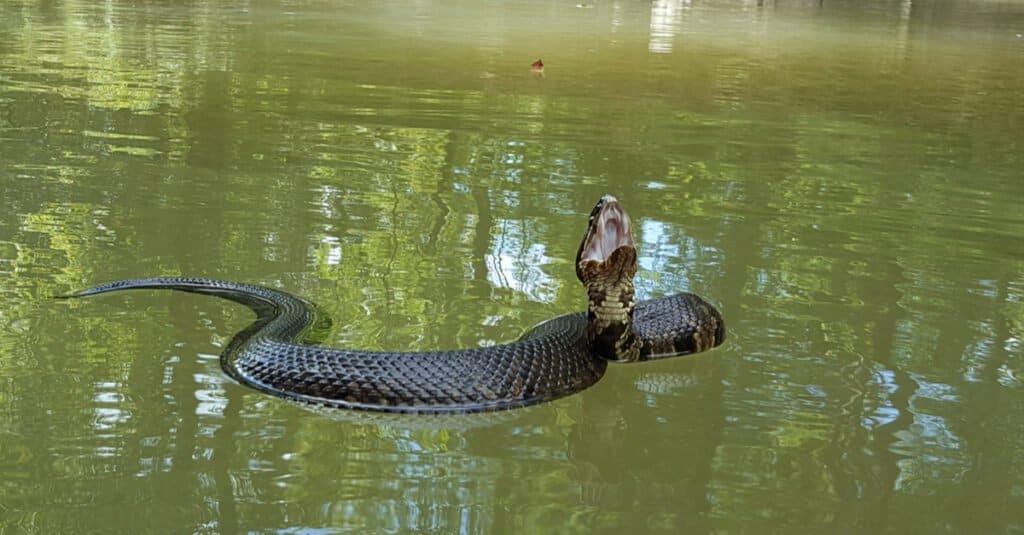
Cottonmouths are semi-aquatic snakes frequently confused with the nonvenomous water snakes they share their habitat with.
©Seth LaGrange/Shutterstock.com
In terms of distribution, the cottonmouth and the hognose snake share much of their range. Cottonmouths live throughout the coastal plains of the southeastern United States as far west as Texas. They live no further north than Virginia and inhabit the coast all the way to the southern tip of Florida. Hognose snakes also live in the coastal southeastern United States, but their range extends much further inland than the cottonmouth. Hognose snakes live throughout most of the eastern half of the United States and southern Canada.
Cottonmouths are semi-aquatic, they’re almost always found near sources of permanent water. Their favorite haunts include wetlands thick with foliage, cypress swamps, floodplains, slow-moving rivers, and lakes. Hognose snakes, in contrast, prefer sandy soil and are not restricted to sources of water. They can be found in agricultural fields, woodlands, and coastal fields.
Cottonmouth vs Hognose Snake: Appearance
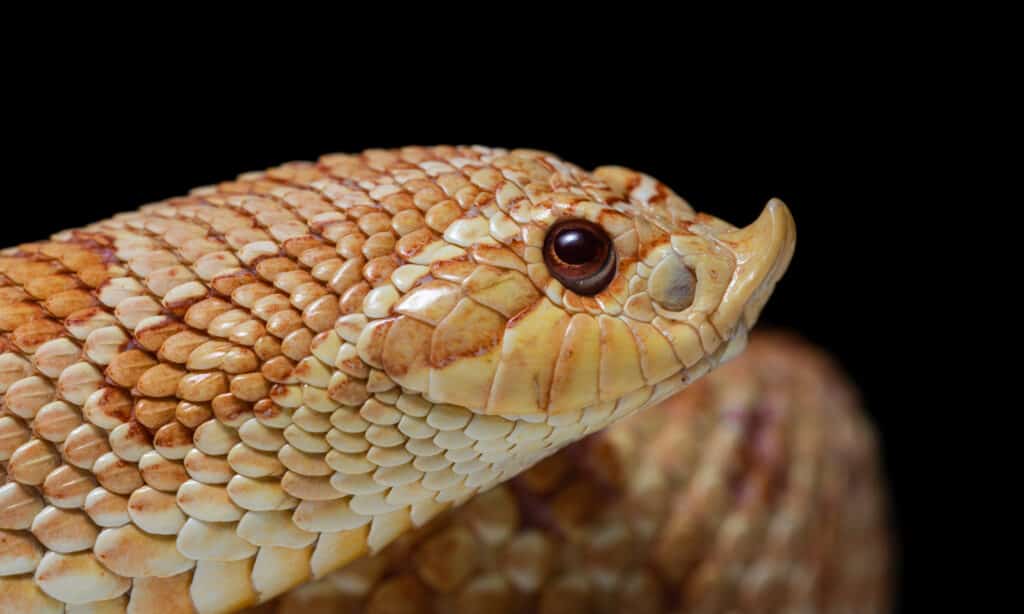
Both the cottonmouth and the hognose snake have varying appearances.
©Ana Dracaena/Shutterstock.com
When it comes to looks, the cottonmouth and the hognose snake share a few common traits. Cottonmouths are named for the unique cotton white coloring of the inside of their mouth. Hognose snakes are named for their upturned, hoglike snouts. Another unique feature of the hognose snake’s appearance is its ability to flatten most of its body as a defensive mechanism. The cottonmouth’s distinct features also include heat-sensing pits on its snout, and large venom glands just behind its eyes.
Cottonmouth snake coloration may vary from striped yellow and brown to pure brown or black. These snakes may also have dusky gray coloring coupled with irregular bands. Baby cottonmouths have very distinct markings and a bright yellow tail. Hognose snakes may be yellow, black, dull green, gray, or brown, and always have darker spots. These spots may even look like eyes. Often, their patterning includes light and dark brown scales with black, irregular splotches.
Cottonmouth vs Hognose Snake: Behavior

Though widely believed to be aggressive, cottonmouths generally only strike to defend themselves.
©Jay Ondreicka/Shutterstock.com
Behaviorally, the cottonmouth and the hognose snake are very different. Cottonmouths are both diurnal and nocturnal, depending on the season. They hunt using both ambush and active hunting. They’ll eat just about anything small enough to swallow, including baby alligators, turtles, smaller snakes, toads, lizards, rats, and fish. Cottonmouths spend most of their time in or near the water. They’re easy to identify in the water because their bodies sit high in the water. On land, they tend to bask in the sun near water but rarely climb into trees.
The hognose snake has one specialty, and that’s hunting toads. These snakes are specifically designed to hunt even the most poisonous of toads. They have fangs in the backs of their mouths which puncture inflated toads, allowing the hognose snake to swallow them whole. They also eat frogs, birds, small mammals, salamanders, and even birds. Hognose snakes are immune to the poison secreted by toads and other amphibians. If confronted, these snakes may play dead, or flatten out their bodies and hiss loudly.
Cottonmouth vs Hognose Snake: Reproduction & Lifespan
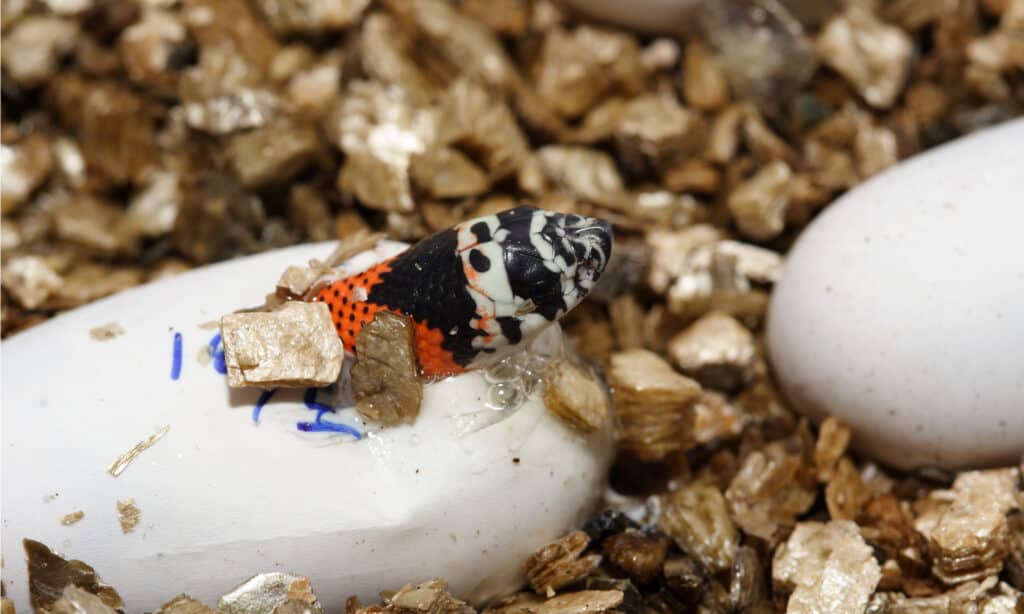
While both snakes, the cottonmouth, and hognose snake have different means of giving birth to their young.
©Borhuah Chen/Shutterstock.com
Cottonmouth and hognose snake lifespans are very similar. Both species are thought to live up to 10 years in the wild. The biggest reproductive difference between the two is that cottonmouths give birth to live young, while hognose snakes lay eggs. Cottonmouths give birth to between 1-20 snakelings at a time, while hognose snakes lay up to 25 eggs per laying.
The photo featured at the top of this post is © Matt Jeppson/Shutterstock.com
Discover the "Monster" Snake 5X Bigger than an Anaconda
Every day A-Z Animals sends out some of the most incredible facts in the world from our free newsletter. Want to discover the 10 most beautiful snakes in the world, a "snake island" where you're never more than 3 feet from danger, or a "monster" snake 5X larger than an anaconda? Then sign up right now and you'll start receiving our daily newsletter absolutely free.
Thank you for reading! Have some feedback for us? Contact the AZ Animals editorial team.






